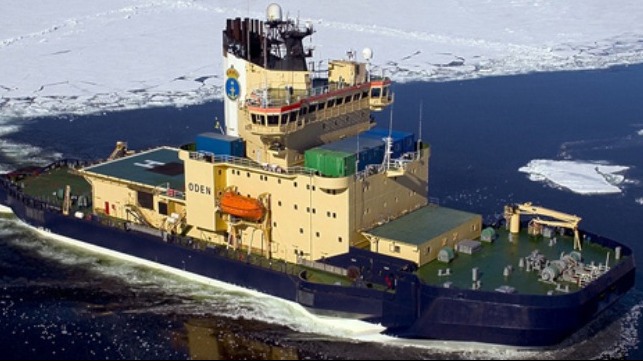Finland and Sweden Collaborate to Design Next Generation Icebreaker

Finland and Sweden are working jointly to support the development of a new generation of icebreakers. The goal of the project is to select the design of a new vessel that will meet the challenges of the shipping industry while also responding to environmental concerns. The design project, which is valued at between $3.5 and $4.5 million, is being awarded to Aker Arctic Technology and will be completed by the end of 2021.
Icebreaking is essential to ensuring the transport of goods to northern Sweden and Finland during the wintertime. According to representatives of the two countries, cargo ships need aid and a clear path to be able to pick up and collect goods from their critical industries.
Currently, there are five active icebreakers in Sweden and nine in Finland. The fleet, however, is aging. New icebreakers will be needed to keep the trade ongoing.
"The Swedish industry is dependent on icebreaking in the Baltic Sea up to 130 days a year. Our current fleet is old with increasing needs for repairs. Therefore, we very much look forward to the design of the next generation of icebreakers to service larger ships in a fossil-free environment," said Katarina Norén, Director-General of the Swedish Maritime Administration.
The design process will start with research and evaluation of alternative icebreaker concepts, with the emphasis on finding solutions to maintain the service level while also responding to the new environmental initiatives. Among the challenges, the design will need to address is the fact that the size of merchant vessels entering Finnish and Swedish ports is growing. These larger vessels generally have less ability to handle ice-covered waters, making it difficult for them to pass through ice masses and the challenging ice conditions in the Baltic.
In developing the parameters for the project, the authorities in Finland and Sweden determined that the new icebreaker will require the ability to assist ships with a beam of up to 105 feet. Cost-effective operation, low lifecycle costs, the ability to transition to a fossil-free fuel by 2030, and reducing CO2 emissions are also important goals for the design.
"Our foreign trade and competitiveness are based on year-round security of supply. The stocks of import and export logistics are largely located on moving ships. An adequate level of assistance available from icebreakers is a prerequisite for ensuring that the raw materials and different products are in the right place at the right time. New types of solutions are expected from this design project to respond to changes in the operating environment as well as to maintain an adequate level of service also in the future," said Kari Wihlman, Director-General of the Finnish Transport Infrastructure Agency.
Representatives from Finland and Sweden spent six months designing the project and during the first phase of the two-stage tendering process reviewed the pre-qualifications of companies. Three tenders were received during the first phase and one tender during the second stage.
“This new ship will represent a completely new generation of icebreakers. It will incorporate design, construction, and operational experience from existing Baltic assistance icebreakers as well as our other icebreaker designs. With an operational lifetime spanning half a century, the new icebreaker must be designed to comply with future emission goals,” said Reko-Antti Suojanen, Managing Director of Aker Arctic. “Responding to this major technological challenge today will require us to apply the full extent of our icebreaker design expertise as well as to utilize the latest environmental technologies developed by the maritime industry."
The project calls for the selection of a design by March 2021, after the first cost estimate for the construction of the icebreaker is available. Then they expect to refine the design details and construction specifications to provide the basis for the shipyard tendering process.
